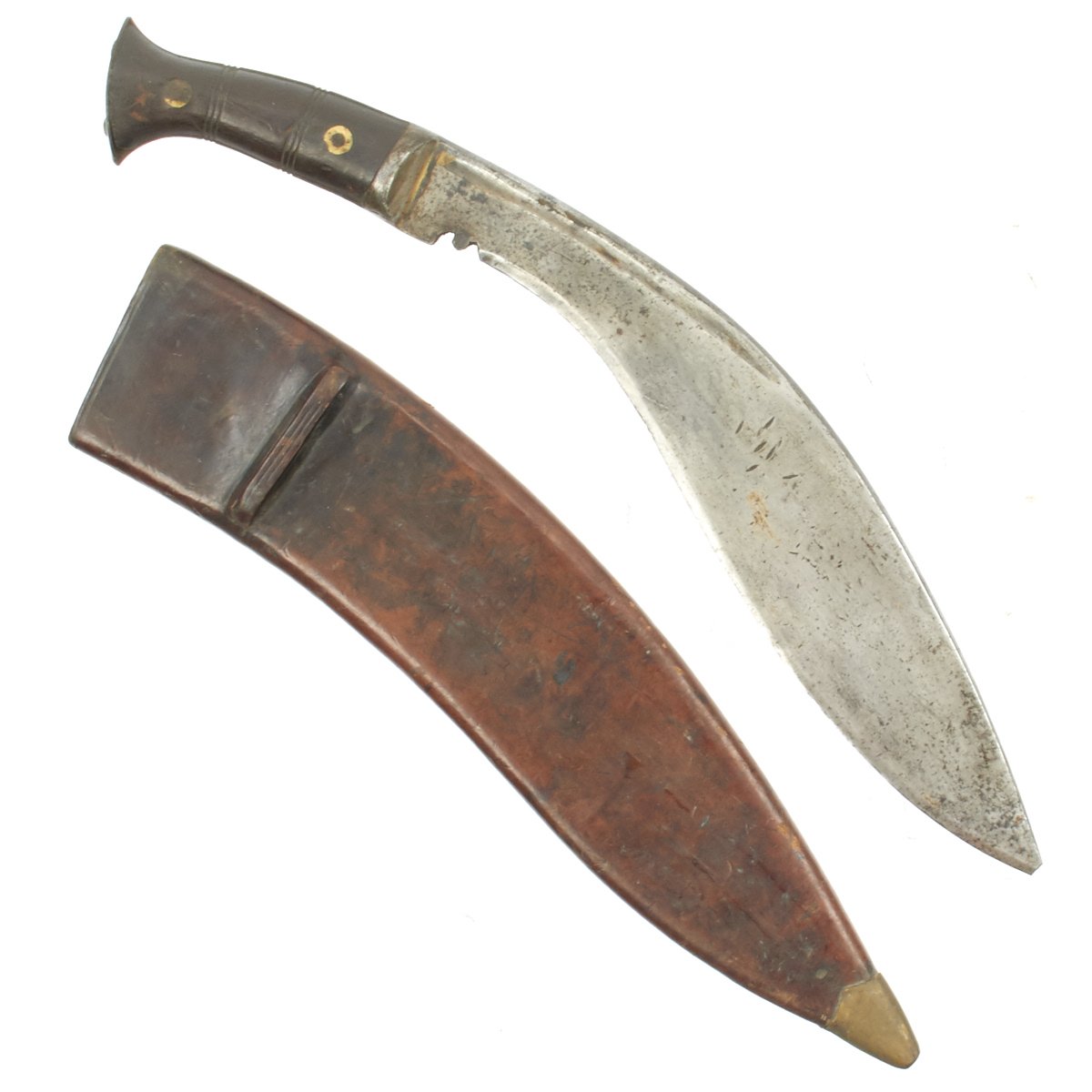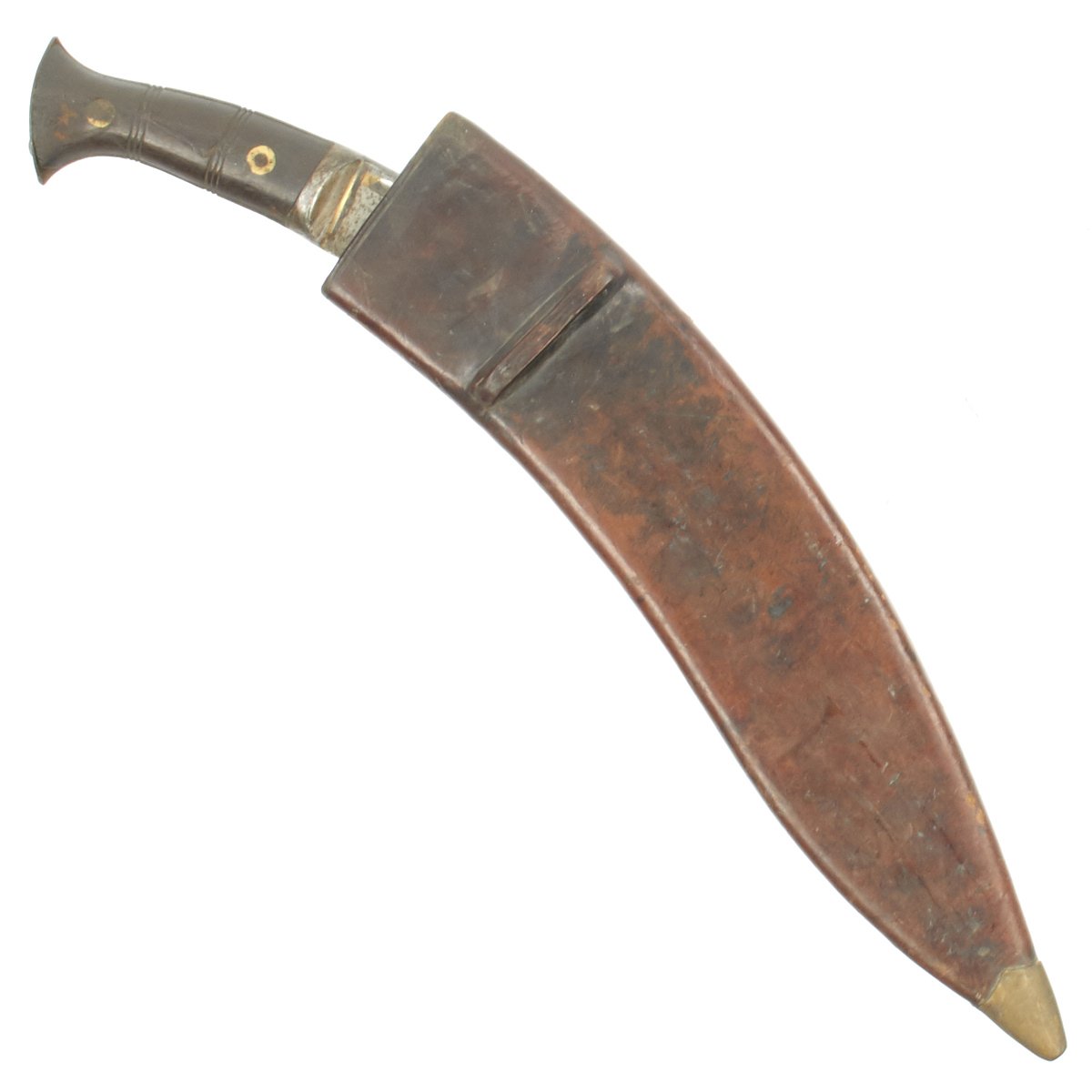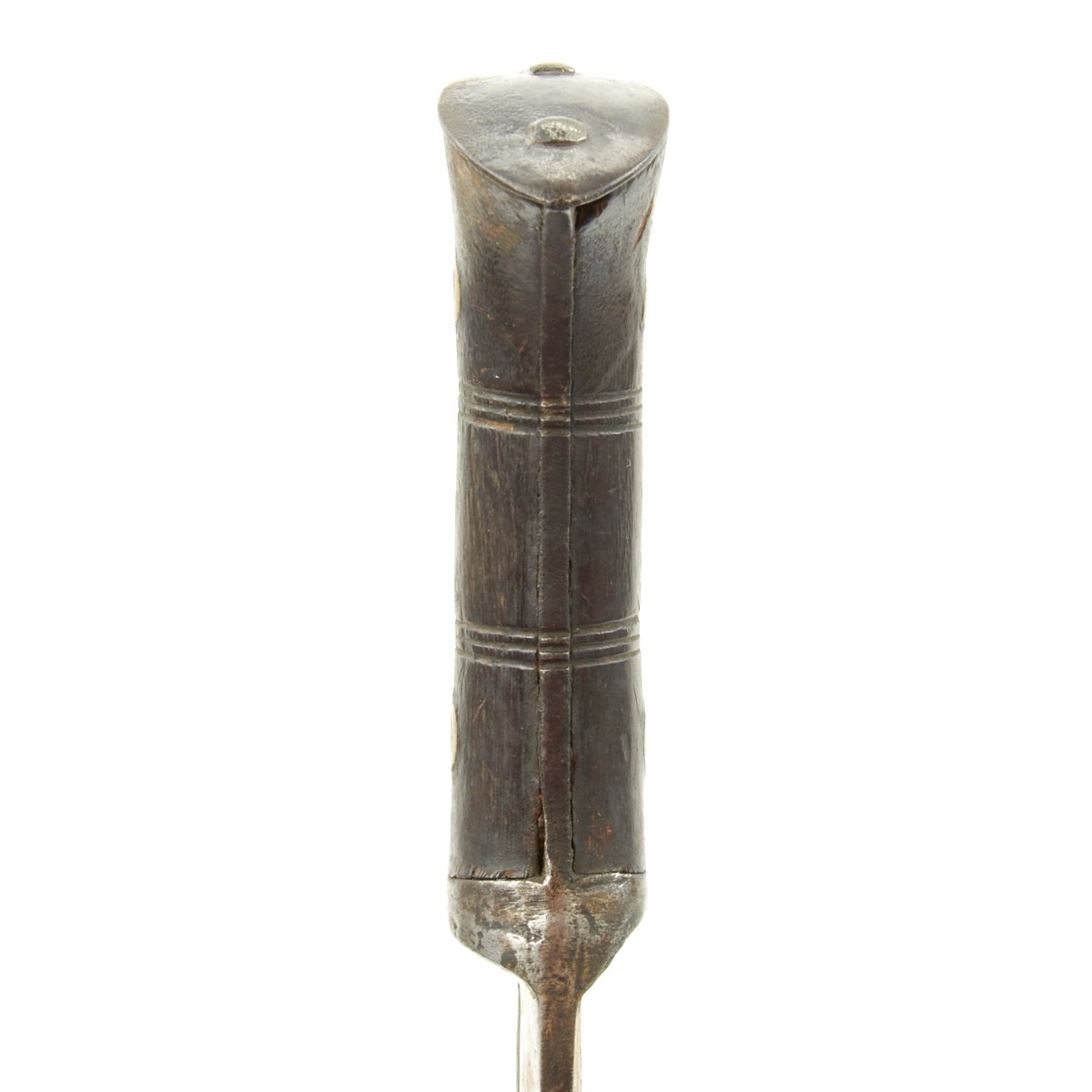Original British WWII 1942 Dated MkII Pattern Kukri by Army Traders Dharan with Hard Leather Scabbard Original Items
$ 495,00 $ 148,50
Original Item: One Only. The Gurkha Kukri is possibly the most recognizable and famous fighting knife ever developed. Indigenous to the mountain Kingdom of Nepal, home of the Gurkhas who were “absorbed” into the British sphere of influence with the Treaty of Seguli in 1816. These ferocious fighters were infamous for their valor and for using the kukri an amazing “Tool of Death”. It is a forward leaning leaf shaped blade, which provided the user with leveraged striking power. The kukri was became an everyday tool as much as it was a deadly weapon. Introduced long before the British arrived in the early 19th century, the Kukri became standard equipment for Gurkha Regiments serving in the British Army. Ironically the earliest Kukris are the largest, which seems improbable as improvements in nutrition and health care has resulted in mankind in general being much larger today than in 1800, yet with Kukris it is the exact reverse.
This kukri originates from our 2003 purchase of the Royal Nepalese Arsenal, which was located at the palace of Lagan Silekhana in Katmandu, Nepal. The purchase included a considerable number of military issue Kukris, including a very small number of British-Issued WW2-dated MkII Pattern Kukris. These examples were produced in India and Nepal under British Contracts for the War effort, and are very hard to find on the market today.
This example is in very good condition, and is maker marked and dated on the blade: A.T.D. II 42. This abbreviation stands for Army Traders Dharan, and that it is a MkII Kukri made in 1942. This example has a 13 inch blade, and an overall length of 17 1/4 inches. The blade is in good condition, though the last 1/4 of the tip is broken off. The edge is good, and it is overall solid. The grip scales are in good condition, with some chips near the pommel and dents, but no major cracks. As with other MkII Kukris, this example has a full length and width blade tang, which significantly increased the durability of the kukri when compared to the small partial tang earlier versions had.
The hard leather scabbard is in very good condition, with the leather almost completely intact, and the brass nose cap still in place. It is a bit worn, which unfortunately has worn off the markings, but it is definitely original and correct for the WWII Time period. This is one of the last of these kukris that we will have to offer, and makes a great addition to any Nepalese collection.
Fast Shipping with Professional Packaging
Thanks to our longstanding association with UPS FedEx DHL, and other major international carriers, we are able to provide a range of shipping options. Our warehouse staff is expertly trained and will wrap your products according to our exact and precise specifications. Prior to shipping, your goods will be thoroughly examined and securely secured. We ship to thousands clients each day across multiple countries. This shows how we're dedicated to be the largest retailer on the internet. Warehouses and distribution centres can be located throughout Europe as well as the USA.
Note: Orders with more than one item will be assigned a processing date depending on the item.
Before shipping before shipping, we'll conduct a thorough inspection of the items you have ordered. Today, the majority of orders will be delivered within 48 hours. The delivery time will be between 3-7 days.
Returns
The stock is dynamic and we cannot completely manage it because multiple stakeholders are involved, including our factory and warehouse. So the actual stock may alter at any time. It's possible that you may not receive your order once the order has been made.
Our policy is valid for a period of 30 days. If you don't receive the product within 30 days, we are not able to issue a refund or an exchange.
You can only return an item if it is unused and in the same state as the day you received it. You must have the item in its original packaging.
Related products
Uncategorized
Uncategorized
Uncategorized
Uncategorized
Uncategorized
Uncategorized
Uncategorized
Uncategorized
Uncategorized
Australian WWII Owen MK1 Machine Carbine SMG Custom Fabricated Replica with Sling Original Items
Uncategorized
Armored Burgonet Helmet & Polearm from Scottish Castle Leith Hall Circa 1700 Original Items
Uncategorized
Uncategorized
Angolan Rebel 1970s era 60mm Inert Display Mortar from Angolan Civil War Original Items
Uncategorized
Uncategorized
Uncategorized
Uncategorized













































































